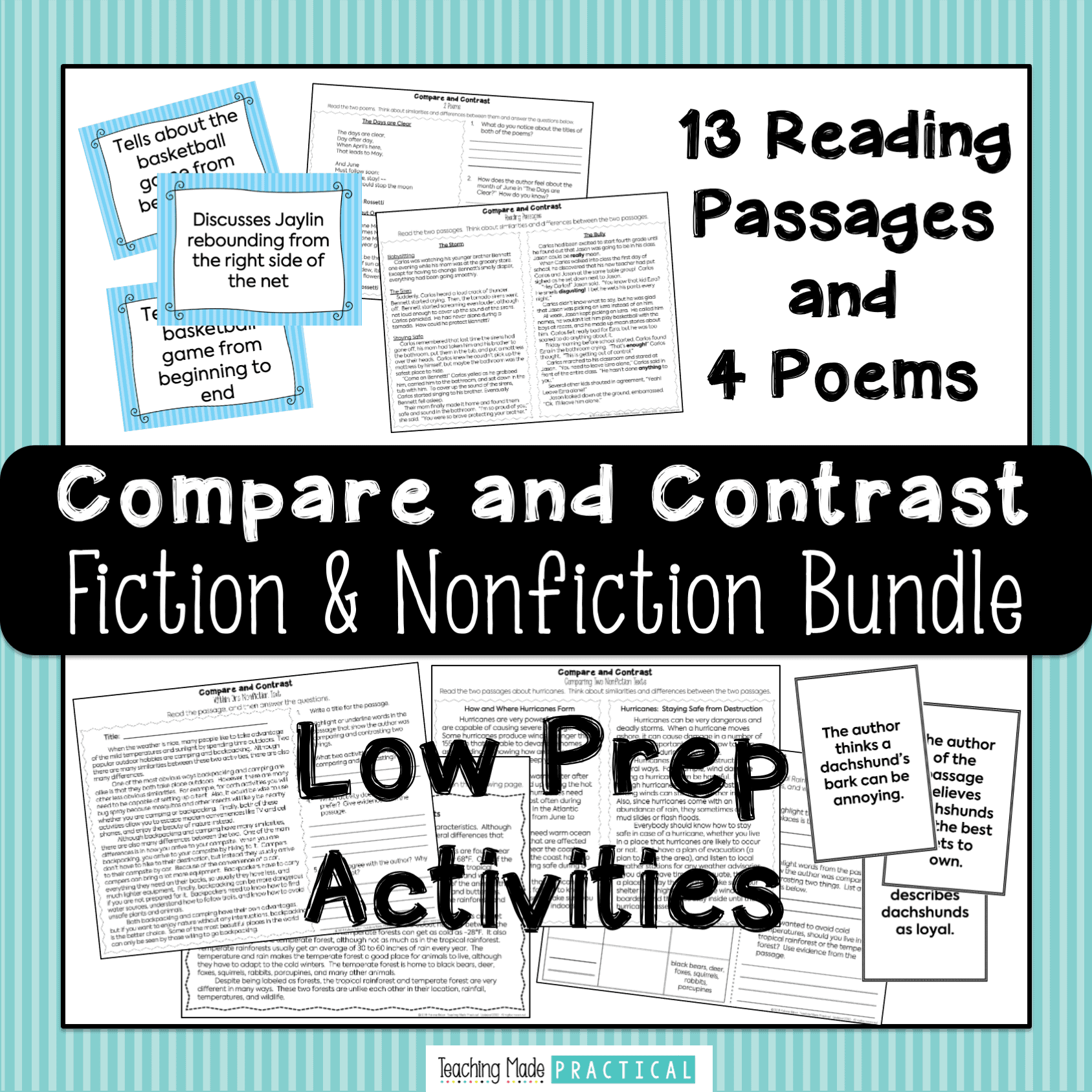When teaching students how to compare and contrast, teachers often get stuck using the Venn Diagram. While there is nothing wrong with this, there are many other ways to have students practice comparing and contrasting, however!
Comparing and contrasting is an important skill for 3rd grade, 4th grade, and 5th grade students. It requires higher level thinking.
Below you will find a huge variety of activities to help you practice this skill with your students in a new and more rigorous way, including:
- how to scaffold a compare and contrast essay
- using "Would You Rather" Questions in your comparing and contrasting lessons
- fun ways to get students up and moving while finding similarities and differences
- free activities
- and more...
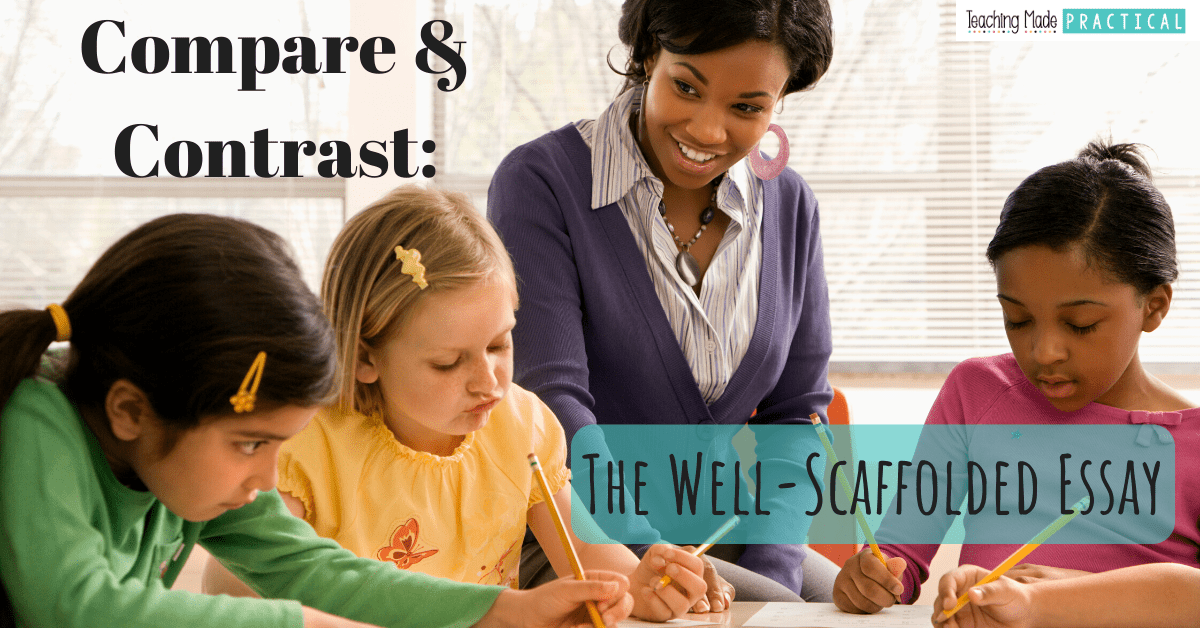
Students often find that writing a compare and contrast essay is challenging and frustrating. These tips, sentence starters, and paragraph frames can help your students be successful!
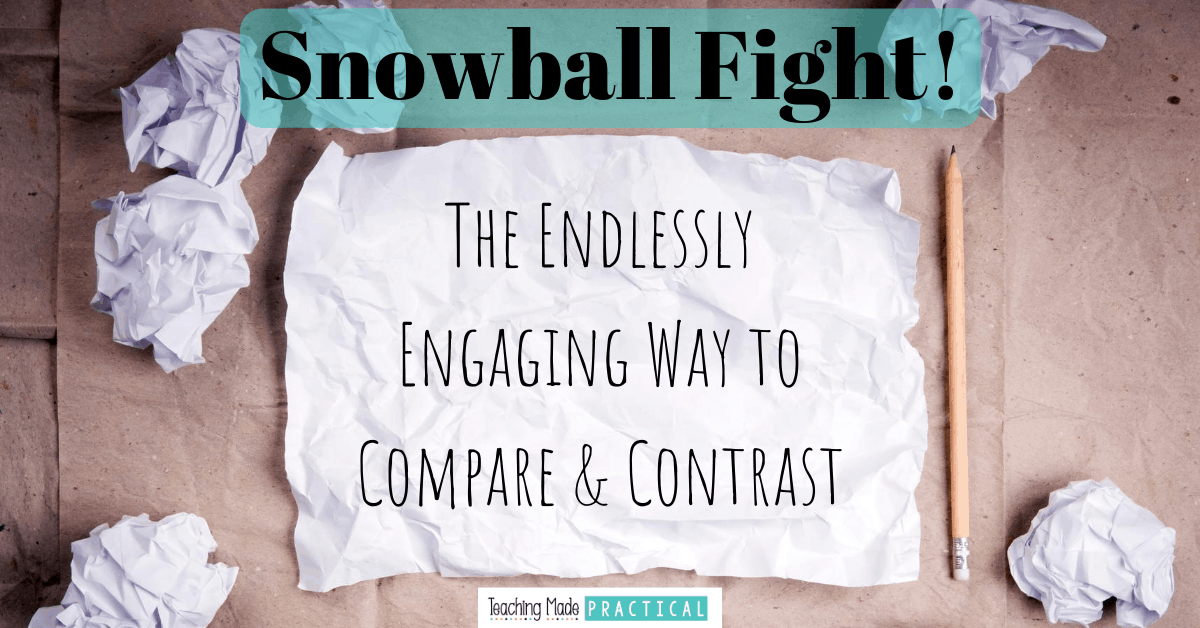
A twist on the fun ice breaker - Use indoor snowball fights in your compare and contrast lessons!
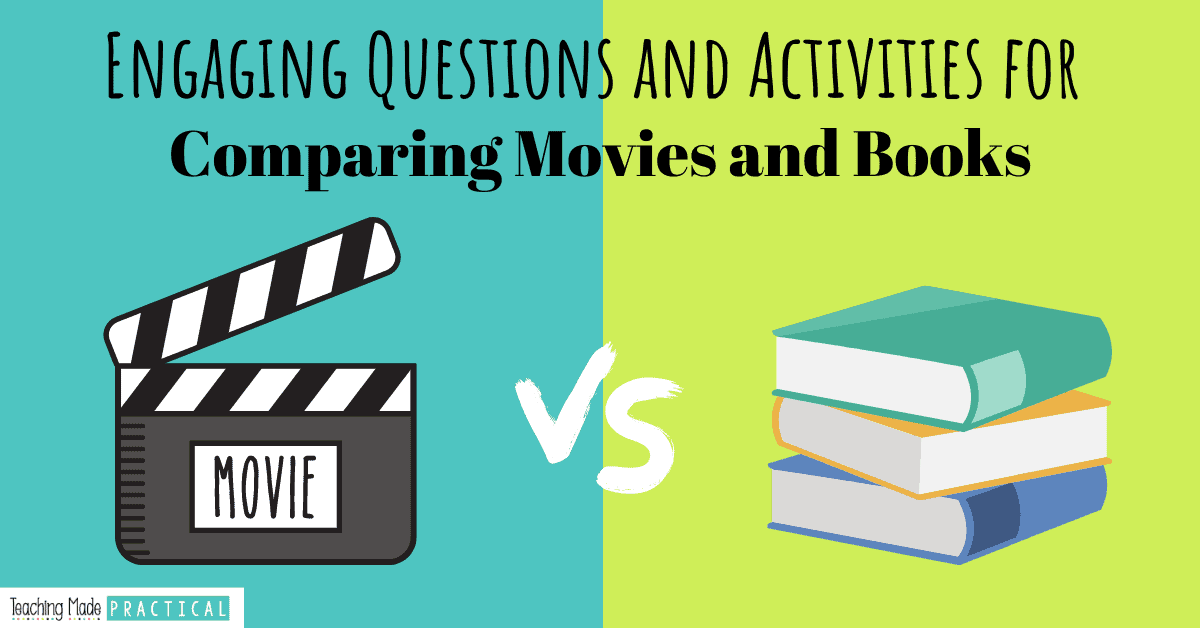
Feeling guilty about putting a movie in for your students, even though they already read the book? Not to worry! These questions and activities will help students engage in critical thinking while they watch!
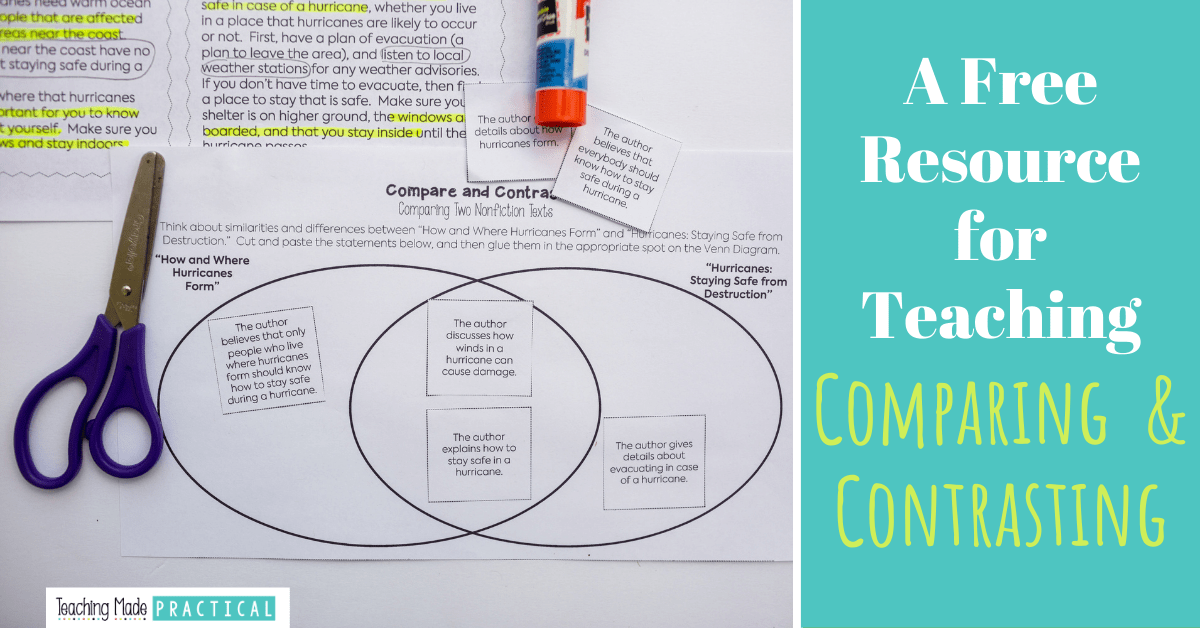
This free cut and paste activity has students read two texts on the same topic, and then compare and contrast the two.
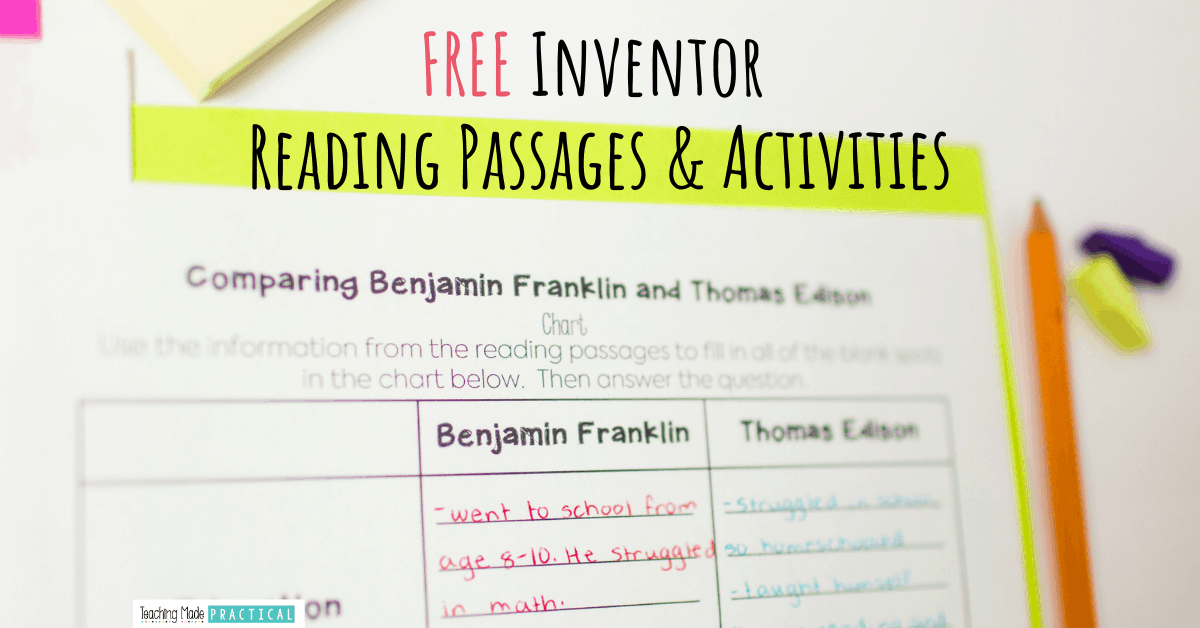
Upper elementary students compare and contrast 2 famous inventors - Benjamin Franklin and Thomas Edison - with this free resource. It includes reading passages, activities, and more.
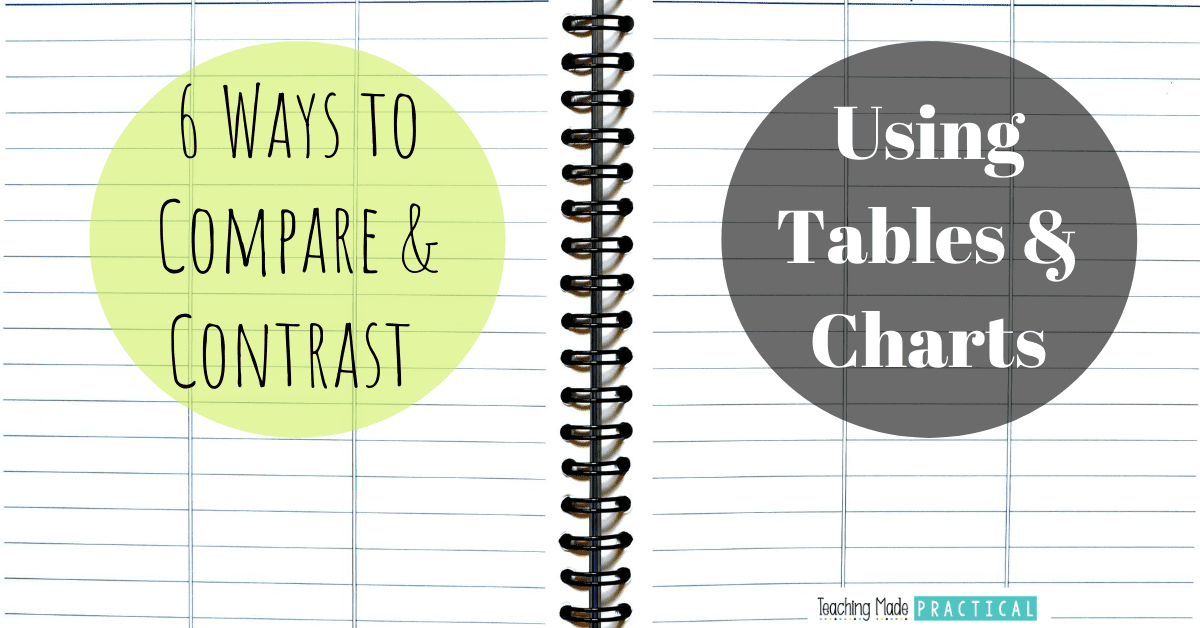
No compare and contrast unit without some lessons on how to use and read tables and charts. Check out these 6 easy ideas for adding this to your compare and contrast lessons.
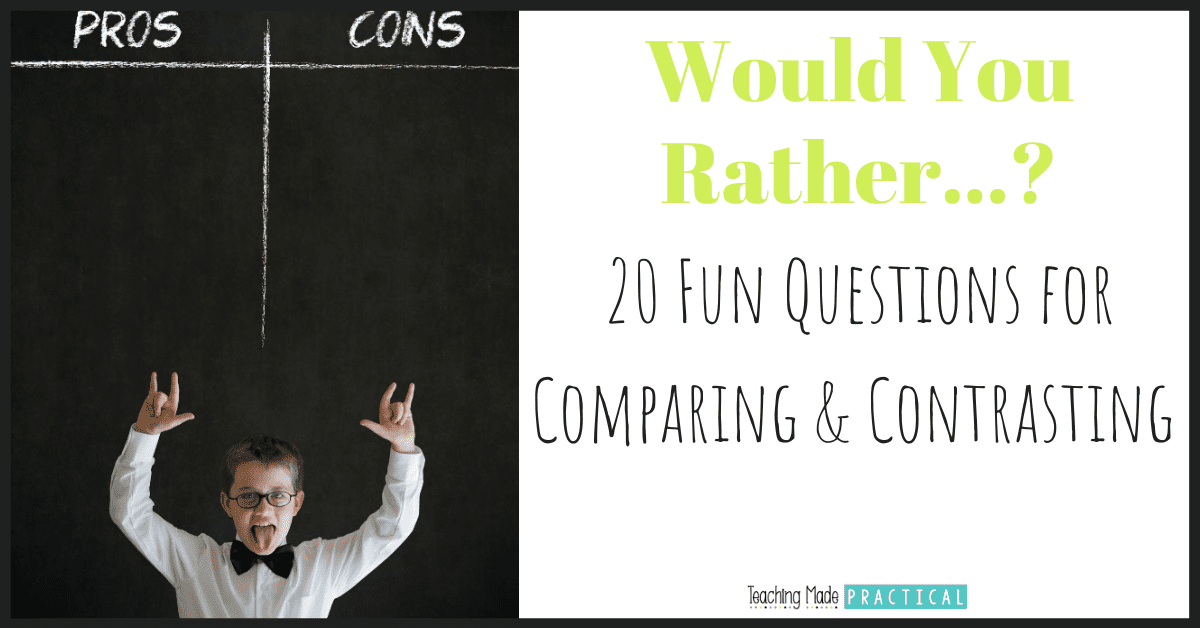
"Would You Rather" questions aren't just for ice breakers - add them to your compare and contrast lessons to change things up. Check out these 20 "Would You Rather" Questions that make comparing and contrasting fun.
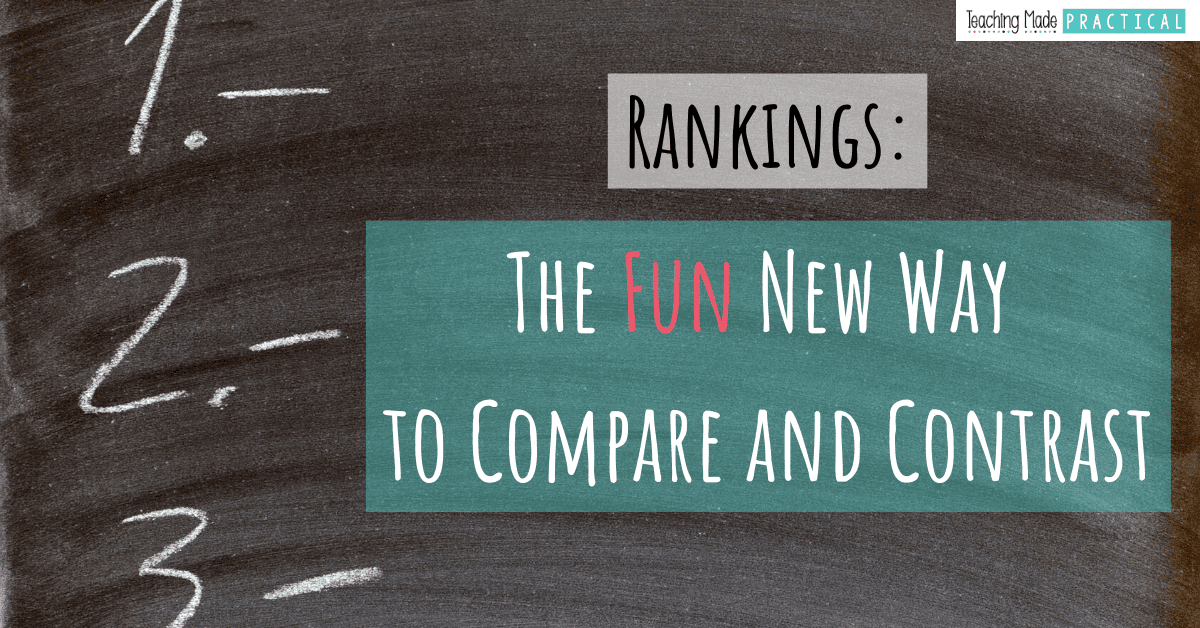
Compare and contrast by having students rank topics based on certain characteristics. Includes practical ideas for using this idea with 3rd, 4th, and 5th grade students.
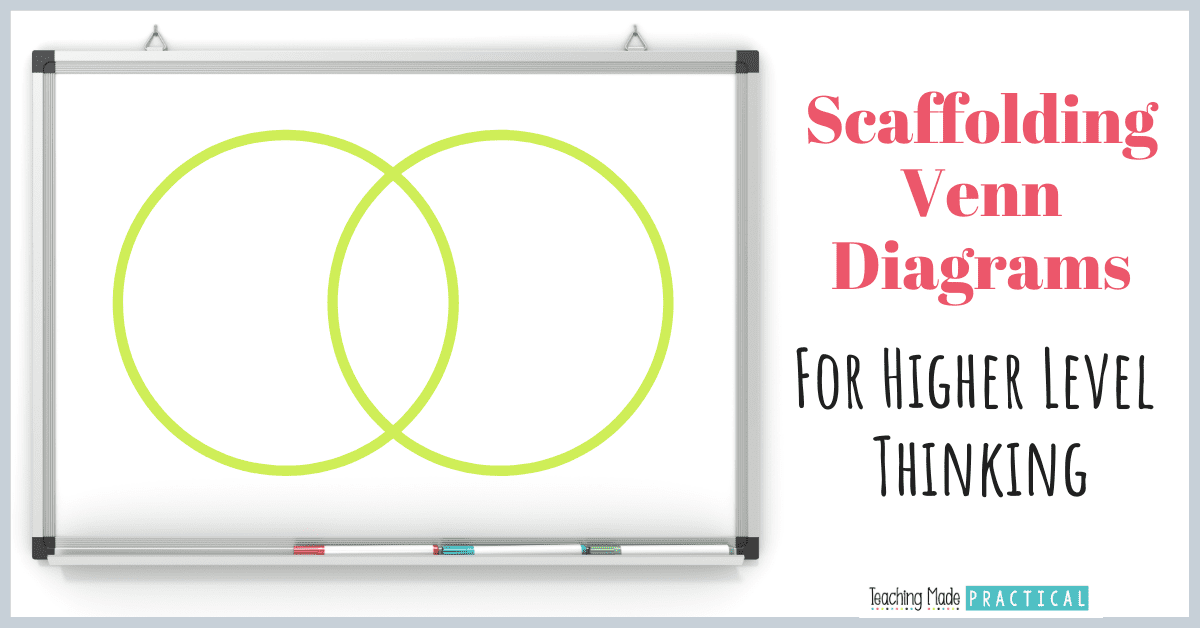
Higher order thinking, here we come! Scaffold your students' way up Bloom's taxonomy with these tips on how to draw out higher level comparisons and contrasts when using Venn Diagrams.
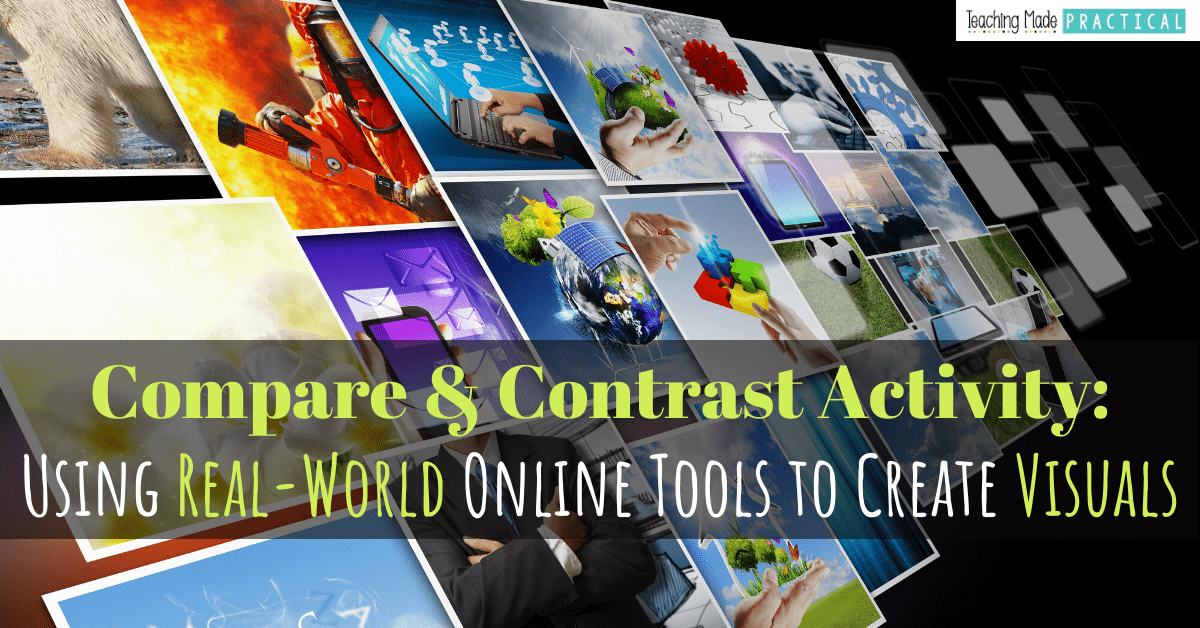
Use online tools for a real world compare and contrast lesson. 3rd, 4th, and 5th grade students organize similarities and differences in a visual way.
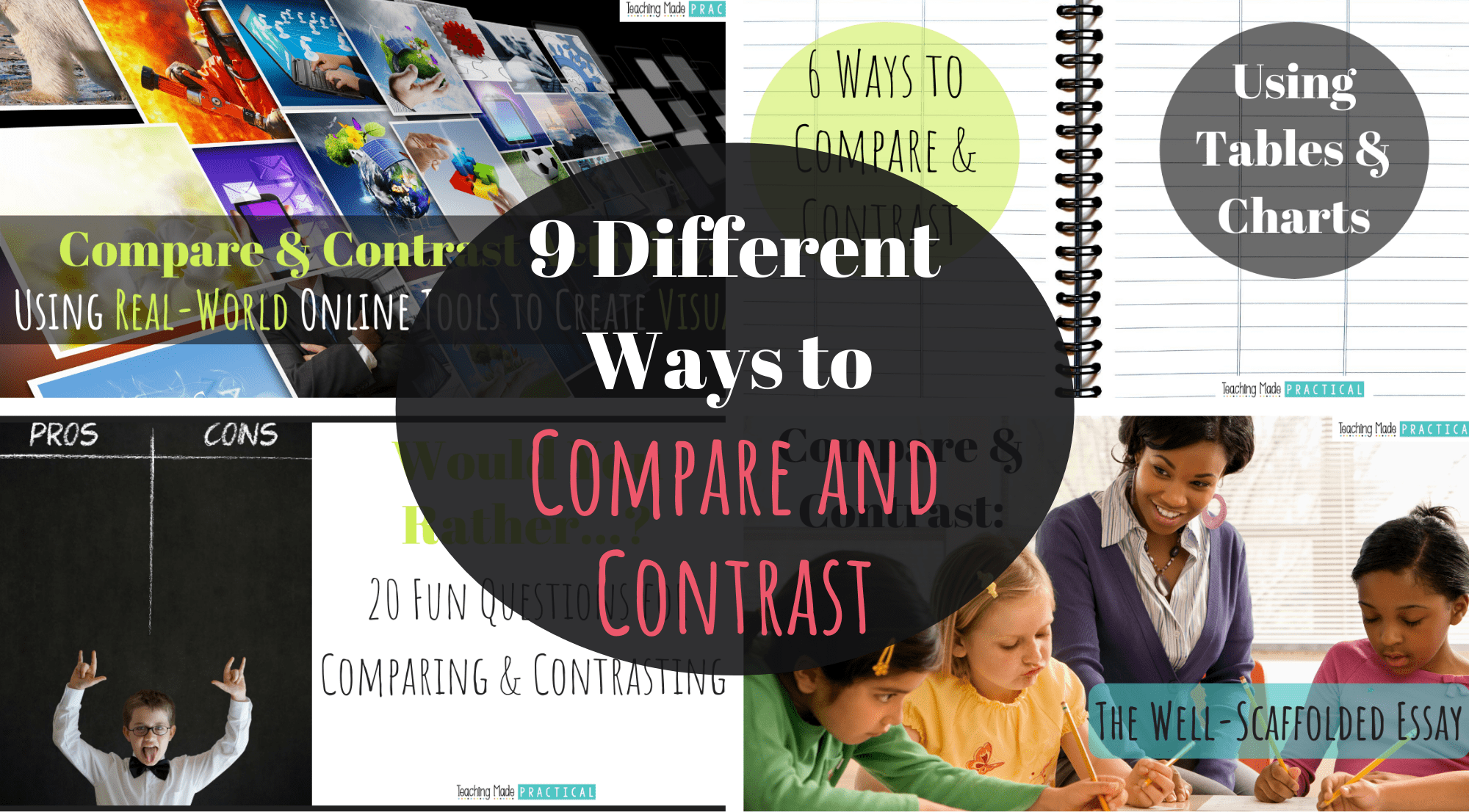
Move over, Venn Diagrams! Here are 9 new ways to help your upper elementary students compare and contrast - and have fun doing it!
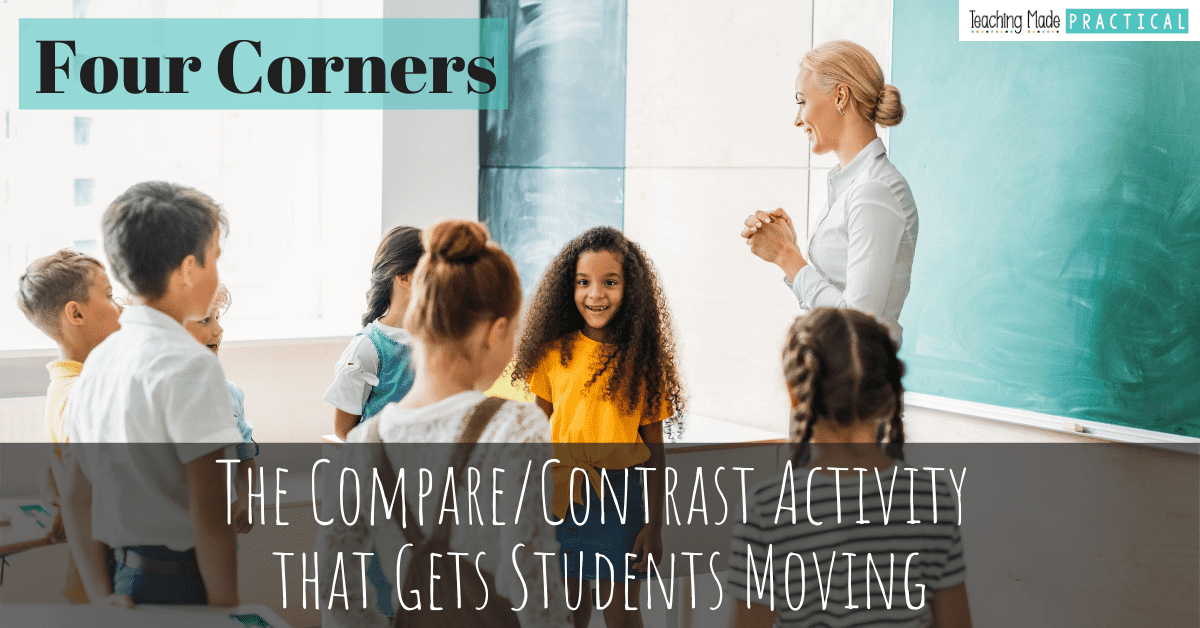
Get your students up and moving with this fun compare/contrast activity! It makes a great, no-pressure assessment. There are 3 ways to set it up, and two of them are very LOW PREP!
Looking for some low prep, engaging activities for your compare and contrast lessons? Save planning time with this Compare and Contrast Activities Bundle.
It includes fiction and nonfiction passages, poems, charts, Venn Diagrams, snowball fights, and more to keep your students engaged and learning.
The compare and contrast links above provide free ideas, activities, and printables you can use when teaching text features to your elementary students. The activities included will work best for 3rd grade and 4th grade, although many of these ideas could be adapted to reach younger or older students.
The comparing and contrasting activities above address the following Common Core Standards:
CCSS.ELA-LITERACY.RL.2.9
Compare and contrast two or more versions of the same story (e.g., Cinderella stories) by different authors or from different cultures.
CCSS.ELA-LITERACY.RI.2.9
Compare and contrast the most important points presented by two texts on the same topic.
CCSS.ELA-LITERACY.RL.3.9
Compare and contrast the themes, settings, and plots of stories written by the same author about the same or similar characters (e.g., in books from a series)
CCSS.ELA-LITERACY.RI.3.9
Compare and contrast the most important points and key details presented in two texts on the same topic.
CCSS.ELA-LITERACY.RL.4.9
Compare and contrast the treatment of similar themes and topics (e.g., opposition of good and evil) and patterns of events (e.g., the quest) in stories, myths, and traditional literature from different cultures.
CCSS.ELA-LITERACY.RI.4.6
Compare and contrast a firsthand and secondhand account of the same event or topic; describe the differences in focus and the information provided.
CCSS.ELA-LITERACY.RL.5.9
Compare and contrast stories in the same genre (e.g., mysteries and adventure stories) on their approaches to similar themes and topics.
CCSS.ELA-LITERACY.RI.5.6
Analyze multiple accounts of the same event or topic, noting important similarities and differences in the point of view they represent.

